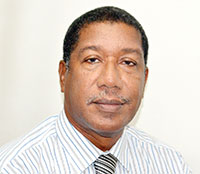THE permanent teeth that are most frequently lost in childhood are the first molars. These are a person’s first permanent teeth. If the child’s second molars have not yet erupted, they can be an excellent replacement. For example, if a child’s six-year molar is extracted because of gross decay before the eruption of the second permanent or 12-year molar, the developing second molar will drift forward into the space of the first depending on which tooth was lost, upsetting the position of all molars in that arch.
To prevent super-eruption of the opposing molar, it should be extracted at the same time, thereby allowing the upper and lower second molars a chance to replace the first molars. But that child’s dentition becomes abnormal for life.
Dentists see many cases like the one I am about to describe. There is the example of a patient in his mid-fifties who lost all his upper front teeth and a few lower molars through extractions. He had an upper partial denture with only the front teeth placed, so he can smile without attracting undue attention, but none on the lower jaw. Despite having been warned by his former dentist of the dire consequence of super-eruption of unopposed teeth without the lower partial denture he continued to wear the upper one alone in spite of the constant annoyance. Obviously, super-eruption occurred. Now, remember, a tooth does not stop growing. What makes it stop is when there is an opposing one called an antagonist.
Eventually, after years he decided to do the lower partial denture.
At this time, with all the super-eruption that would have taken place, the lower denture either cannot be placed, will have to be constructed with missing teeth, or otherwise be rather weird, all to accommodate the malformed upper bite. All this could have been avoided if he had followed a simple rule. Once you had a tooth extracted or lost in an accident, replace it within six weeks. Many dentists refuse to provide dentures to patients who present mouths exhibiting the consequence of gross neglect. Frequently the dentist gets the blame for not producing what would clearly a miracle.
Assuming all the first and second molars are in normal occlusion and the lower first molar is extracted sometime during adolescence, the second molar frequently drifts and tilts forward into the space. The bicuspid in front of the space is less likely to drift backward because it is held in place by occluding with the upper teeth.
At this early age, the upper first molar super erupts slightly down into the space below until further movement is prevented by contact with the shifting lower teeth in adjacent spaces. Quite often the teeth is stabilised at this point, but it is not uncommon for small spaces to remain, which collect food particles and plaque, causing further tooth decay and periodontal breakdown. Thus, it is desirable to prevent shifting of other teeth by replacing the missing tooth soon after extraction. But there should be at least a six-week delay to allow the tooth socket to heal so that the artificial tooth (bridge) will fit snugly against the gum ridge.
If the tooth is replaced immediately after extraction, the gum may shrink away from the bridge but this problem can easily be solved later. Immediate dentures, which I only do for anterior teeth, should only be done in persons whose social standing and/or occupation necessitate them not ever being seen in public without teeth. In these cases, the dentures are made before the extractions are done.
But what if the extraction was many years ago, and the teeth have already shifted so that the space is small and the situation has stabilised. What if the adjacent teeth are sound, with only small fillings or perhaps no filling at all? What if the bone support is strong and there is no periodontal breakdown around these teeth?
What if you do not miss the tooth until your dentist reminds you of the small space and recommends a fixed bridge? Before consenting to a replacement bridge, consider the likelihood of leaving them alone as the time for adequate rectification has passed. So, If you face the circumstances described above, a bridge may not be necessary and should not be done.


.jpg)











